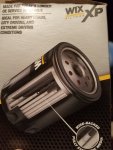You are misinformed. Mil-spec CUCV vehicles were used by various federal alphabet agencies like Secret Service, Marshals Service, IRS and many others. You may rest assured those vehicles were fully air-conditioned and optioned.
CUCV (Commercial Utility Cargo Vehicle) came in many configurations. Common military service designations like M-1008, M-1009, M-1028 and the like are common.

en.wikipedia.org
***AND I JUST REMEMBERED THE ACRONYM FOR CHENEY'S COST-REDUCTION PROGRAM!! IT WAS CALLED "COMMERCIAL-OFF-THE-SHELF" or COTS.*** It allowed military procurement of commercial grade vehicles (and many other things) in order to save money. Remember the $10,000 toilet seats? This resulted in vehicle manufacturers losing money on overpriced mil-spec vehicles. So what did the vehicle manufacturers do?? They immediately began offering all the mil-spec options on commercially available vehicles. And thus people like you and me could go to a dealer and option out a vehicle just like a formerly military ONLY mil-spec vehicle. That's what my truck is - a CUCV-spec fire department truck. Armored gas tank, high-ride suspension, thin door panels, heavy-duty electrical, heavy duty cooling, extra oil coolers and things I can only remember looking at the build list.


